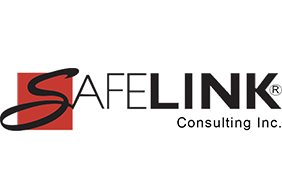As we step into the winter months, an alarming surge in respiratory illnesses are sweeping across the country, posing significant health challenges for communities. From the common cold and seasonal flu to the ongoing threat of COVID-19 and Respiratory Syncytial Virus (RSV), individuals are facing a multitude of respiratory risks. This surge has raised concerns about the strain on healthcare systems and the need for proactive measures to safeguard public health.
The resurgence of respiratory viruses comes at a time when the world is still grappling with the effects of the COVID-19 pandemic. Despite the availability of vaccines, the virus continues to circulate, and emerging variants add complexity to the public health landscape. In addition to the surge of COVID-19 cases, there has also been a spike in respiratory syncytial virus (RSV) and influenza virus (flu) creating a troubling trifecta fueled by holiday gatherings and peak travel season. According to the CDC at least 30 states have reported high or very high levels of flu like illnesses with hospitalizations also on the rise.
Influenza, commonly known as the flu, is a contagious respiratory illness caused by influenza viruses. It can lead to mild to severe illness and, in some cases, can be life-threatening. Typical symptoms include fever, cough, sore throat, runny or stuffy nose, body aches, headache, chills, and fatigue. Influenza can spread rapidly in communities and is a leading cause of illness, hospitalizations, and, tragically, deaths each year, particularly among vulnerable populations such as young children, the elderly, and individuals with underlying health conditions.
RSV, another prominent respiratory virus, primarily affects young children and infants. It can cause mild, cold-like symptoms, but in some cases, especially in infants and older adults, RSV can lead to more severe respiratory infections such as bronchiolitis and pneumonia. RSV is highly contagious and can spread rapidly in workplace settings or wherever people congregate.
Other respiratory infections such as the common cold, adenoviruses, and human metapneumovirus contribute to the burden of respiratory illnesses, particularly during the winter season. These viruses share common modes of transmission, primarily through respiratory droplets produced when an infected person coughs, sneezes, or talks. Close contact with infected individuals or touching contaminated surfaces and then touching the face can also lead to transmission.
One of the primary challenges presented by this surge is the potential strain on healthcare resources. Hospitals and medical facilities may face increased patient volumes, testing demand, and the need for respiratory care. This can lead to longer wait times, overwhelmed staff, and a heightened risk of exposure for both patients and healthcare workers. It is important to note that dental healthcare workers are also at increased risk for coming in contact with infected individuals and must have strong respiratory hygiene and cough etiquette prevention measures in place to limit the transmission of respiratory pathogens spread by droplet or airborne routes.
Another challenge is protecting employees from exposure to these illnesses. As an employer, it is important to assess all hazards and take necessary precautions to protect workers from them. The rise in respiratory illnesses is a hazard that needs to be taken seriously. In light of these developments, it is crucial for employers and employees to take proactive steps to protect their health and that of their workplace.
Basic preventive measures such as frequent handwashing, wearing masks in crowded or indoor settings, and staying home when feeling unwell remain effective strategies for reducing the spread of respiratory viruses. Additionally, getting vaccinated against COVID-19 and the flu can significantly lower the risk of severe illness and mitigate the impact of these viruses on public health.
Maintaining a strong immune system through healthy lifestyle choices, including regular exercise, a balanced diet, and adequate sleep, can bolster the body's defenses against respiratory infections. Practicing good respiratory hygiene in everyday life, such as covering coughs and sneezes and avoiding close contact with individuals who are sick, also contributes to minimizing the transmission of viruses.
As the situation continues to evolve, it is essential for employers to stay informed about local public health guidelines and recommendations. Monitoring updates from reliable sources and adhering to guidance from healthcare authorities can help mitigate the impact of respiratory viruses and contribute to the collective effort to protect public health.
The surge in respiratory illness calls for a collective commitment to safeguarding individual and community well-being. By enhancing preventive measures, staying informed, and supporting healthcare efforts, we can navigate this challenging period with resilience and protect the health of our workplaces and communities. Reach out to SafeLink Consulting for help with a respiratory protection program and more. Also, the CDC is posting updates on respiratory viruses every week; for the latest information, please visit CDC Respiratory Virus Updates.
Learn more about what SafeLink Consulting can do to help your business with compliance services, including dental infection control, safety compliance to meet OSHA training requirements and quality system consulting to meet FDA compliance. Contact us for an OSHA consultation. Learn more about Dental OSHA Compliance.






